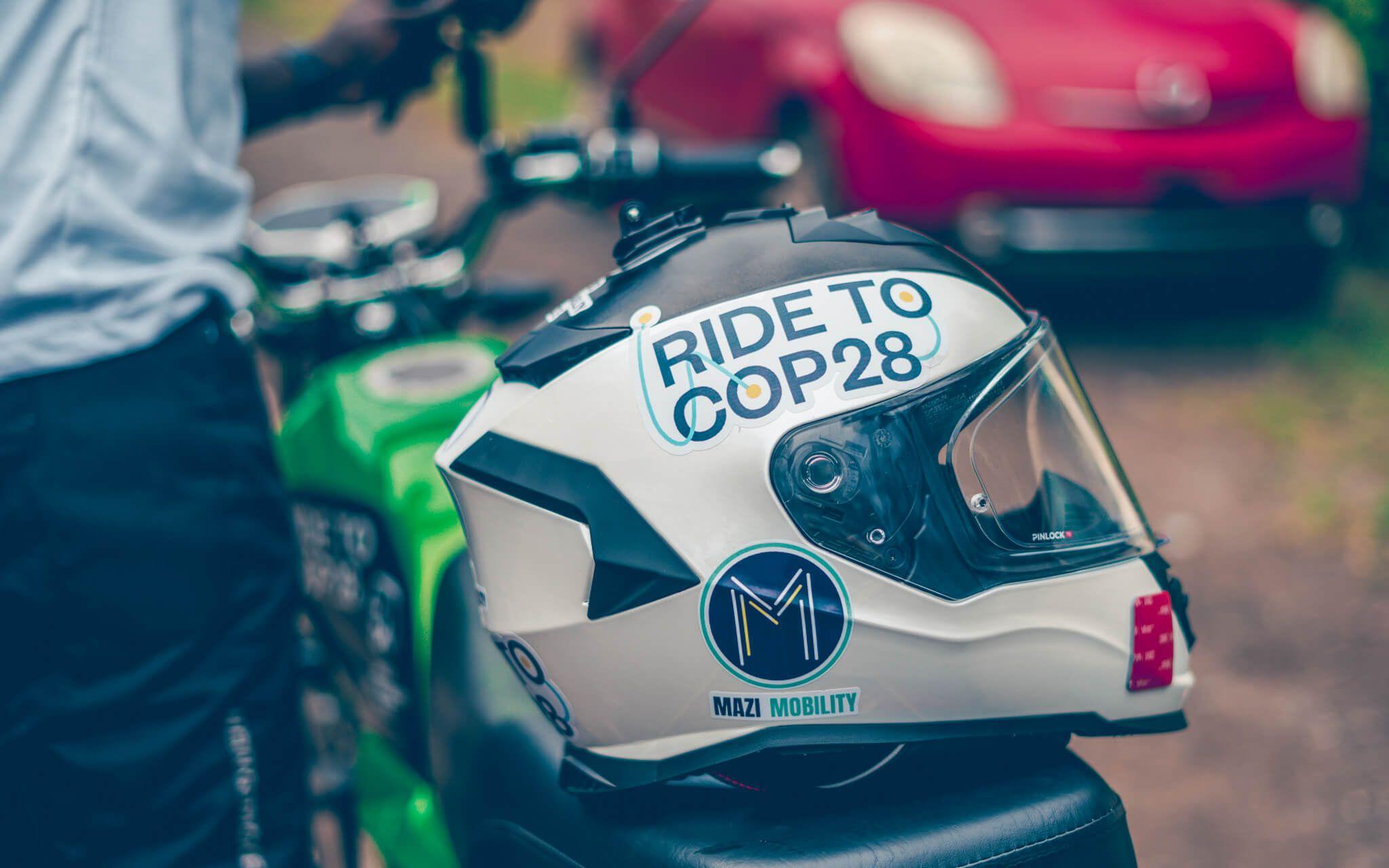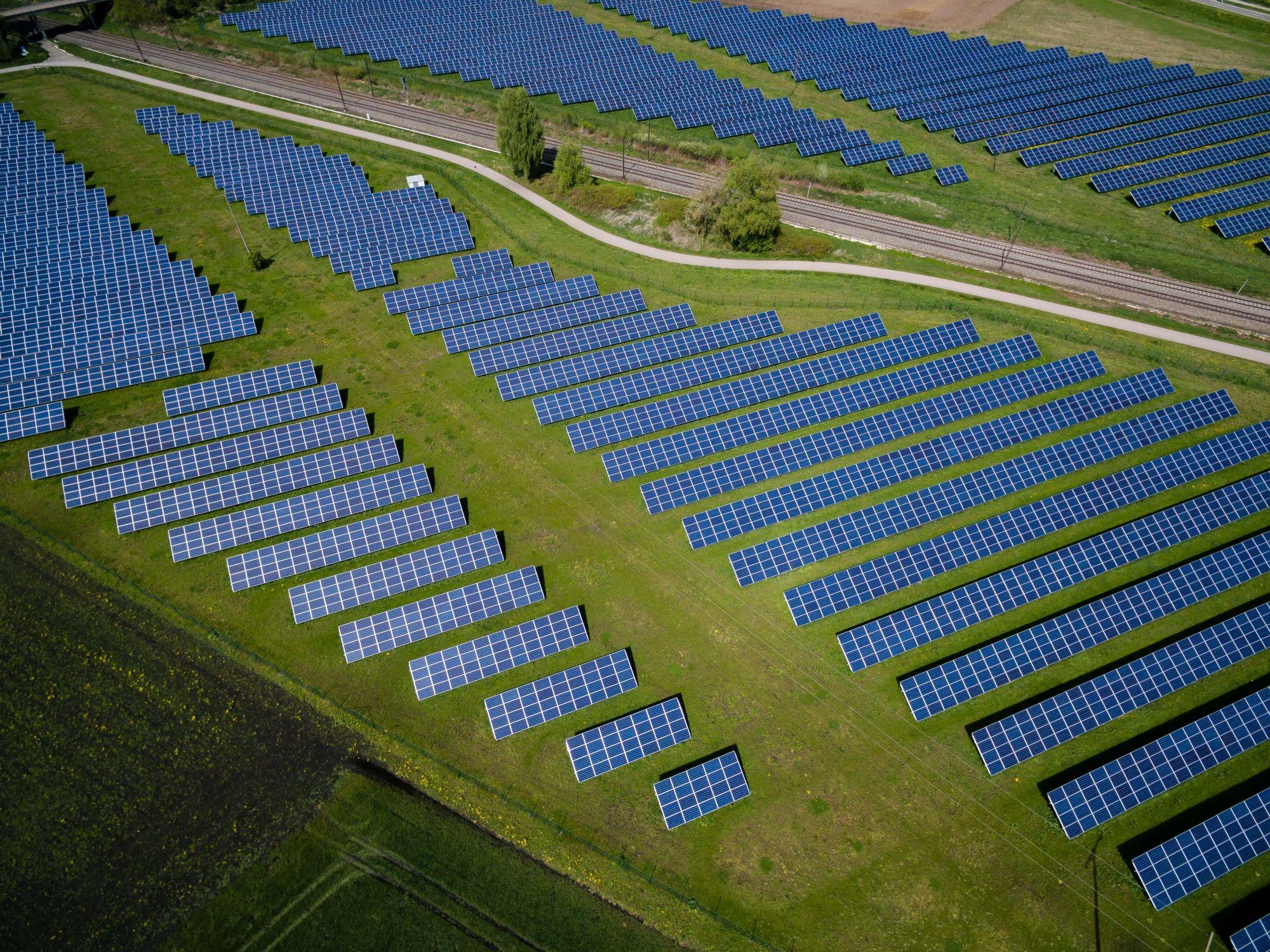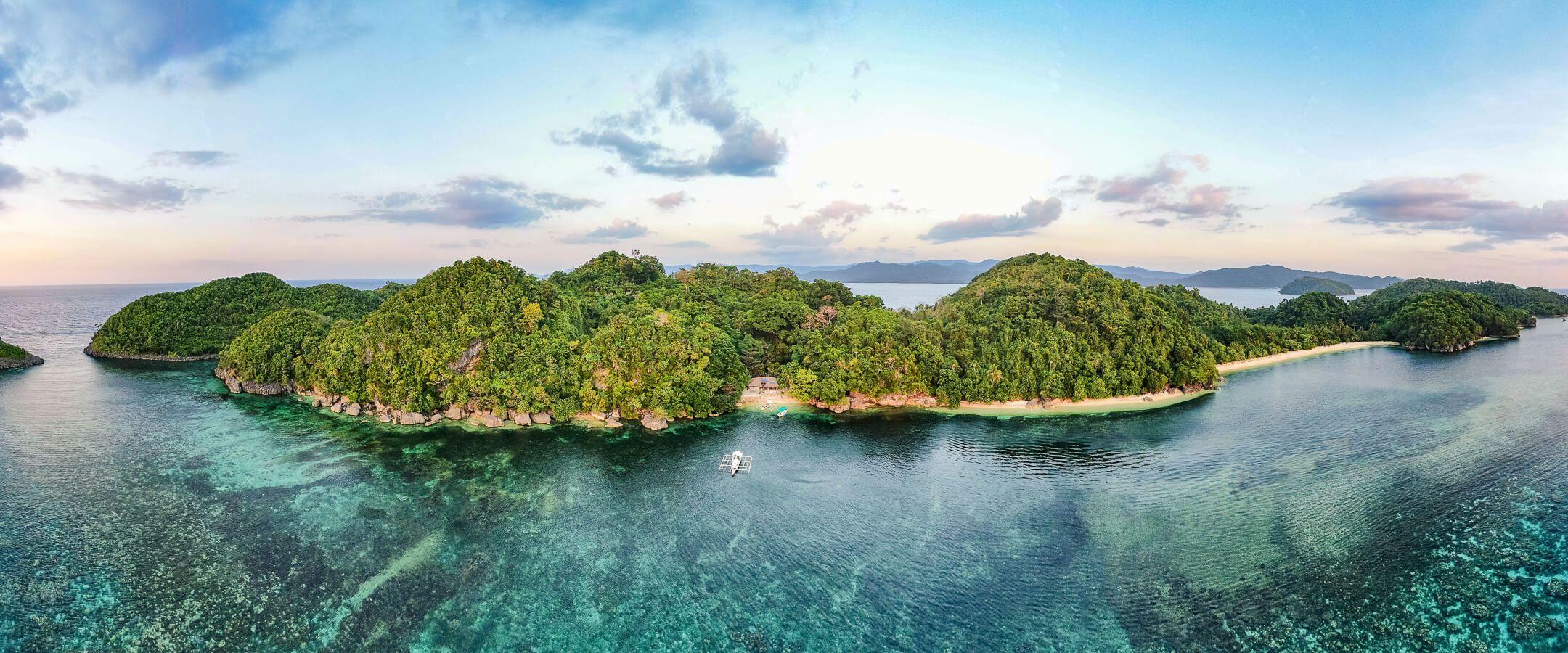Safeguarding the Ancient Odyssey of Whales
For millions of years, our world’s whales have been helping marine ecosystems flourish. As they face rising threats, three organisations are not only making waves in protecting the gentle giants but also weaving community bonds with the ocean.
Lulu did not know why she could not have babies. Her body felt different, that’s for sure, but the matter remained that no one in her community had given birth for more than 20 years, and time was running out. She was the last female, their last hope.
But as she tried desperately to find food in the Hebridean sea, starving and struggling in vain against the heavy fishing ropes cutting painfully into her body, she knew her future – and that of her community – was over.
On January 3, 2016, the body of Lulu, the last recorded female of the unique ecotype, the West Coast Community of killer whales in the UK and Ireland, washed up on the Isle of Tiree.
“When the Scottish Marine Animal Stranding Scheme did an autopsy on her, they found that she had very high levels of pollutants called PCBs (polychlorinated biphenyls) in her body, which made her infertile,” says Sadie Gorvett, Education and Sightings Officer of the Hebridean Whale and Dolphin Trust (HWDT) in Scotland, which has been researching the local marine life for over 30 years.
Lulu was one of the most polluted whales ever examined, with PCB levels over 100 times the level at which they affect marine mammal health. Sadie says, “Unfortunately, this population of killer whales will go extinct in our lifetime.”
For the over 90 species of cetaceans (whales, porpoises and dolphins) that share life on Earth with us, the 21st-century oceans are unfamiliar and dangerous. The explosive advent of global industries has made their home of over 50 million years toxic, warmer and more acidic – disrupting ancestral rhythms with a flood of anomalies.
Moreover, for mammals who make sense of their twilight world primarily through hearing, noise pollution from drilling and ships can also be an excruciating experience.
Five species and 19 cetacean subspecies are currently classified as critically endangered on the IUCN Red List. But three teams of ocean guardians are rising to defend these vulnerable ecosystem engineers worldwide: Whale Seeker, HWDT, and Marine Mammal Center.
An AI Eye in the Sky
Every year, a quarter of the world’s whale species depend on the Arctic’s nutrient-rich waters for sustenance. Thousands of whales set off on migrations every spring and autumn, passing through crucial “blue corridors”.
As the Arctic’s temperature rises four times faster than the rest of the planet, whales are changing their migration patterns to adjust, and ships are venturing further North as the ice melts.
Bowhead whales are the longest-living mammals on earth, living an average of 200 years. They also travel through “geographic pinch spots” that are at risk of being blocked by ships.
“Together with WWF (World Wildlife Fund), we're trying to understand the timing of bowhead whale migration so that WWF can then advocate for seasonal shipping routes that won't impede the whale migration in these key areas,” says Emily Charry Tissier, co-founder and CEO of Whale Seeker, a pioneering Canadian company. Using AI-assisted marine mammal detection globally, Whale Seeker is helping monitor these whales to ensure their survival.
Whale Seeker’s flagship technologies use drones, manned aircraft and satellites to beam photos back to devices where their proprietary algorithm helps detect marine mammals, along with human supervision.
Becoming a mother, all of a sudden, I had zero patience for apathy and inactivity and felt a huge sense of urgency to do something and make a difference.
Proven to be 97% faster than manual annotations performed by biologists, Whale Seeker’s AI is powering marine mammal monitoring activity from pole to pole, spanning over 50,000 km.
“Ocean data is very expensive and hard to acquire, so that leaves a lot of dark spaces in the world,” explains Emily. As whales travel beyond designated political boundaries, she emphasises the urgency of tracking them.
In 2017, Emily, a community ecologist with over 20 years of experience working in coastal and Arctic ecosystems, and her husband, a marine biologist with a passion for whales, had an epiphany while working on a WWF narwhal project. The process of detecting a whale in the ocean was endlessly convoluted and time-consuming - even for experts like them. If they struggled, how could shipping industries identify and avoid whale strikes?
“Becoming a mother, all of a sudden, I had zero patience for apathy and inactivity and felt a huge sense of urgency to do something and make a difference.”
“How can we create a tool that is affordable, powerful, and accessible and get into the hands of as many people as possible?” she wondered.
AI was an obvious route to a data expert like Emily, especially considering the vast amounts of variables needed to process in real-time from the dynamic surface of oceans. And so began her journey as a CEO in 2018. Navigating the rough seas of startup-hood, Emily successfully became the first certified BCorp using AI in the service of wildlife. She was also named among the top 100 Brilliant Women in AI Ethics list in 2023.
Even today, the ocean is an anchor for Emily. “Whenever I'm stressed or feeling unmoored, I go to the beach, and just being in the water helps me. I do feel like my soul is in the ocean.”
Whale Guardians of the Hebridean Seas
Cruising calmly through the dark, nutrient-rich waters of the Hebrides, Knobble the minke whale was oblivious that being sighted sparked delight in the local community.
“Knobble’s a bit of a celebrity in the minke whale world,” says Sadie Gorvett fondly. She is speaking from the Isle of Mull, a Scottish island in the Hebridean archipelago, where the Hebridean Whale And Dolphin Trust (HWDT) is based.
First seen in 2002, Knobble has been sighted almost every year since, helping researchers and citizen scientists understand that the area was important for minke whale populations – one of 24 cetacean species in the area.
“They return to the sea of Hebrides every year around the same time, which means they are coming here for a purpose, and it's to feed,” Sadie explains. Thanks to the regular data they provided to the government over two decades, the Scottish government designated three new Marine Protected Areas there in 2020 for minke whales, Risso’s dolphin and basking sharks.
Due to the local interest in citizen science, HWDT launched Whale Track in 2017, a community sightings network which uses a free app and website where people can register and log whale sightings in real time. “We've got over 7000 users, which is just incredible.”
“We say the phrase, ‘No data is still data.’ Even if you don't see anything, you've had a lovely experience watching the sea for half an hour - you’ve contributed to science.” And that’s the special power of citizen science.
Even if it's their 20th time seeing it, it's always a really excited, ‘Oh my god, there's a dolphin! Oh my god, guys! The group that you're with, it just spreads. And that moment is what makes people care. That's what we need. We need people to care.
Sadie’s favourite part is witnessing these magical moments of interspecies connection - a unique “glimpse into the marine world” made possible thanks to cetaceans’ need to surface and breathe air. “Even if it's their 20th time seeing it, it's always a really excited, ‘Oh my god, there's a dolphin! Oh my god, guys! The group that you're with, it just spreads. And that moment is what makes people care.”
“That's what we need. We need people to care.”
Unfortunately, the rich marine life in UK waters remains unknown to many. Sadie recalls her reaction to a dolphin research volunteering opportunity. “Since when do we get dolphins in the UK? Is this a scam?”
Indeed, it was not, and it heralded the first of many volunteering opportunities that helped Sadie fall in love with the sea and realise that conservation education could be a career. In 2022, she found Whale Track, where she now works on outreach, education, and data verification – helping communities find a place in their heart for the sea, just like she did.
In 2024, there were more than 10,000 cetacean encounters reported. These actionable data points flow from a moment of delight and awe – the sight of a whale in home waters.
Whale Rescuers in San Francisco Bay
In 2022, California’s most widely spotted humpback whale, 17-year-old Fran, was travelling up the West Coast of the USA to feed with her baby, Aria, when a ship slammed into her, separating her skull from her spine. It was the first year she had brought a calf to the feeding grounds.
“Our team at the Marine Mammal Center responded to a report of a deceased whale,” says Kathi George, director of Cetacean Conservation Biology and first responder to whale entanglements at the Marine Mammal Center, USA, the world’s largest marine mammal rescue and rehabilitation centre. “Fortunately, the calf has been resighted later and is alive and healthy, but Fran is a sad example of what can happen with vessel strikes.”
Global maritime traffic has increased 400% over 20 years, from 1992 to 2002. Moreover, while shipping occurs across 92% of whale ranges, less than 7% of risk hotspots have strategies to reduce collisions. Kathi says, “Whales have not evolved to understand threats of entanglement or threats of vessels coming near them.”
With climate change, the ocean is warming slightly, and it's moving the distribution of whales, where they're foraging, where they are going to feed, and putting them in closer contact with people.
Below the Golden Gate Bridge and in plain sight of MMC USA’s hospital, a curious phenomenon started happening in the 2010s – the arrival of larger whale species into the San Francisco Bay Area. “San Francisco Bay is a busy urban waterway. There are eight commercial ports, the third busiest on the West Coast, 85 public marinas and lots of recreational use.”
California gray whales, which migrate from the Arctic to Mexico, were suddenly stopping to feed in the bay, even skipping a northward migration altogether. “They went through an Unusual Mortality Event (UME). Their food wasn't as productive in the Arctic with warming waters and the impacts that it had on their prey. Many of them were malnourished.”
They weren’t the only ones. “Humpback whales have been coming close to shore and feeding on these small bait fish that put them right where humans are using the ocean,” Kathi says. Warmer water had reduced their usual krill populations, forcing them toward shallower waters.
“With climate change, the ocean is warming slightly, and it's moving the distribution of whales, where they're foraging, where they are going to feed, and putting them in closer contact with people,” says Kathi, who believes this will be the biggest threat.
In 2015 and 2016, a deadly marine heatwave caused toxic algal blooms on the coast. As a result, the crab fishing season was delayed until spring, right when whales were returning south from the Arctic to breed in warmer waters.
That season was disastrous. Kathi says, “We had a record number of entanglements, close to 70.”
But Kathi’s team is helping protect these whales. “We conduct research on whales near shore in busy urban areas or busy offshore areas, as well as within San Francisco Bay, and we share our science with managers, policymakers, and decision-makers.”
Due to their work, depth and gear restrictions have been implemented to minimise entanglement risk. They’ve also helped spearhead changes to voluntary vessel speed reduction areas, which accommodate large whale presence. Kathi has also helped catalyse the creation of a Marine Mammals Working Group in San Francisco to encourage collaboration with mariners and the maritime industry.
“I don't think anybody wants to hurt or injure a whale, and that's why my job is collaborating with industry to find ways that we could reduce this risk,” Kathi explains.
Originally an engineer who volunteered with MMC, Kathi became a certified diver and fell in love with the natural world. One seal rescue left a profound impression on her: “One little piece of fishing line, and the animal’s body grew around it, and it wouldn't break, and it wouldn't budge.” The line had cut into the seal’s trachea.
After volunteering for over ten years, she founded California Whale Rescue, which conducted disentanglements and supported efforts to standardise protocols until it merged with MMC USA in 2019.
The Rising Tide Lifts All Ships
“The rising tide lifts all ships” is a common refrain that Emily, the founder of Whale Seeker, has taken to heart. She believes it exemplifies the camaraderie unique to organisations in marine conservation. “Everyone in the ocean space knows that there's an urgency to act and that the job is bigger than all of us combined.”
The biggest hurdle, she says, is the misconception by decision-makers that the tech doesn’t exist to solve these problems. “There are many solutions, and together, all of these solutions can make a big dent.”
These solutions include whale detection technology, speed reduction and shipping lane adjustments, gear restrictions, mitigating bycatch and restoring habitats.
Emily says, “We need the large organisations, the huge transport companies, the huge fishery groups of the world, and politicians to really raise their standards and say,' We have these solutions. We don’t have to do business as usual.” Protecting the odyssey of our whales will require all hands on deck.
2025 marks the 43rd anniversary of the global ban on whaling, a move that helped many whale populations recover. However, some still need our help, like the North Atlantic Right Whale. Currently, MPAs only cover over 8.34%. of the ocean, but the 2023 High Seas Treaty establishes a framework to increase that to 30% by 2030 to meet biodiversity goals.
In the Hebrides, Lulu’s only remaining killer whale community brethren, John Coe and Aquarius, are one of the most cherished sightings today.
Emily has a beautifully oceanic way of looking at what the future holds. “When I'm facing adversity, I like to think about our work like water, that it will eventually find its way. Sometimes, it takes a different path that you can't really predict.”
“I like to think that it’s an inevitability that we will succeed, just like water will always find its way to where it needs to go.”
After all, snippets of humpback whale song are floating past our solar system. Whale song is the only nonhuman language housed in the Greetings section on the Voyager 2 spacecraft, poised to meet extraterrestrial life with the best of what we have on Earth.
These musicians of the oceans, engineers of ecosystems, our majestic brethren - whales.
Most Popular
The Climate Tribe delivers stories about Biodiversity and Conservation, Circular Economy, Food and Water , and how they intersect with climate.
Subscribe
Get the latest stories inspiring climate action around the globe straight to your inbox.





